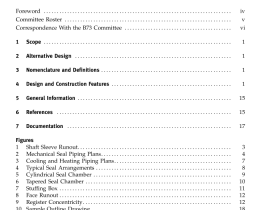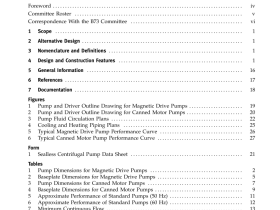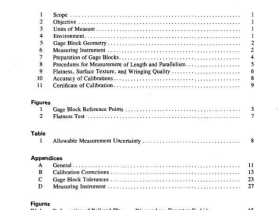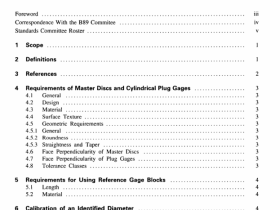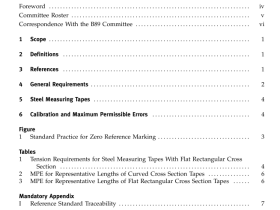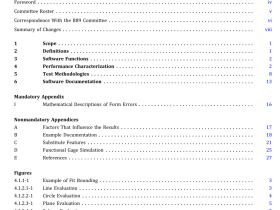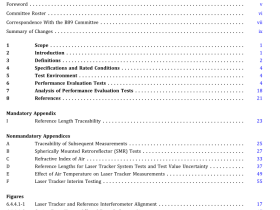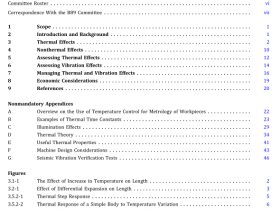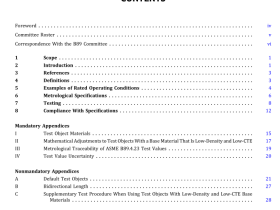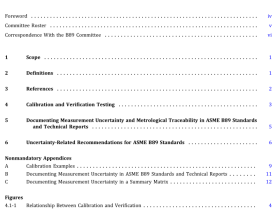ASME B29.28 pdf download
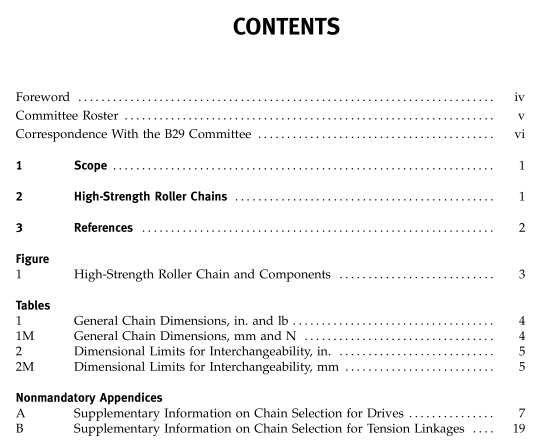
ASME B29.28 pdf download High-Strength Chains for Power Transmission and Tension Linkages
SCOPE
This Standard covers roller chains that are specificallydesigned to withstand occasional high shock loads orhigh starting loads that are encountered in certain construction equipment and other severe-duty applicationsWARNING: Chains covered in this Standard shall not be usedas the primary lifting member, or in the direct drive line ofelevators, escalators, or similar devices for lifting human passen-gers unless applied in accordance with ASME A171. Chainscovered in this Standard shall not be used as climbing chains.
2 HIGH-STRENGTH ROLLER CHAINS
2.1 Nomenclature
high-strength roller chain: roller chain consisting of aseries of alternately assembled roller links [see Fig.1illustrations (a) and (b) and pin links see Fig.1illustration (c) and pin link] in which the pins articulateinside the bushings and the rollers are free to turn onthe bushings. The pins and bushings are press fit in theirrespective link plates.
roller link: link consisting of two roller link plates A-Atwo bushings B-B,and two rollers C-C.pin link: link consisting of two pin link plates E-E, andtwo pins F-F
NOTES:(1) Only heavy series high-strength roller chains are covered inthis Standard.(2) Multiple-strand high-strength roller chains are not covered inthis Standard.
cotter-type comnecting link: link consisting of a pin linkplate E,two cross-drilled pins G-G,and a detachablepin link plate D, retained by two cotters H-H. Cottertype connecting links are used to connect the chain endless on a drive, or to connect the ends of the chain toterminal fittings in a tension linkage see Fig. l, illustra-tion (d)l.Some manufacturers may use a retention meansother than, but equivalent to, cotters.
NOTE: Offset links for high-strength roller chains are not coveredin this Standard.
22 General Proportions
The general proportions of high-strength roller chainsare the same as for heavy series chains listed inASME B29.1.
2.3 Numbering System
For chains covered in this Standard, the right-handdigit in the number is a zero. The numbers to the leftof the right-hand digit denote the number of eighthsof-an-inch in the chain pitch. The letters following thechain number shall be “HE,” with the letter “H” denoting heavy series and the letter “E” denoting high-tensilestrength.
24 Chain Strength Requirements
2.4.1 Minimum Ultimate Tensile Strength.The mini-mum ultimate tensile strength (M.U.TS) for chains cov-ered in this Standard is the minimum force at which anunused, undamaged chain could fail when subjected toa single tensile loading test.
WARNING: The MU.TSis NOTa working load! The MU.TSgreatly exceeds the maximum force that may be applied to thechain in service.
(a) Test Specimen. A length of chain, containing notless than five free pitches, shall be submitted for testing(b) Test Procedure. A tensile force shall be appliedslowly not to exceed 2.0 in./min (50.8 mm/min), in auniaxial direction, to the ends of the test specimen.
(c) Conformance. Chains conforming to this Standardshall have a MU.T.S. equal to or greater than the valuelisted for that specific chain listed in Table 1 or 1M.WARNING: The tensile test is a destructive test! Even thoughthe chain might not visibly fail when subjected to the minimumultimate tensile force, it will have been damaged and will beunfit for service.
2.4.2 Minimum Dynamic Strength. Only highstrength chains are subject to the minimum dynamicstrength requirement; connecting links are not.
WARNING: The dynamic test values are not valid characteristics for designing actual applications. Neither the specified values nor the test results are to be interpreted as allowableworking loads.
(a) Test Procedure. The chain shall be tested accordingto the conformance test described in ASME B29.26.
(b) Conformance. Chains covered in this Standardshall survive a conformance test at load listed for thesubject chain in Table 1 or 1M.
WARNING: The dynamic test is a destructive test! Even thoughthe chain might have survived the test without failure it willhave been damaged and will be unfit for service.
